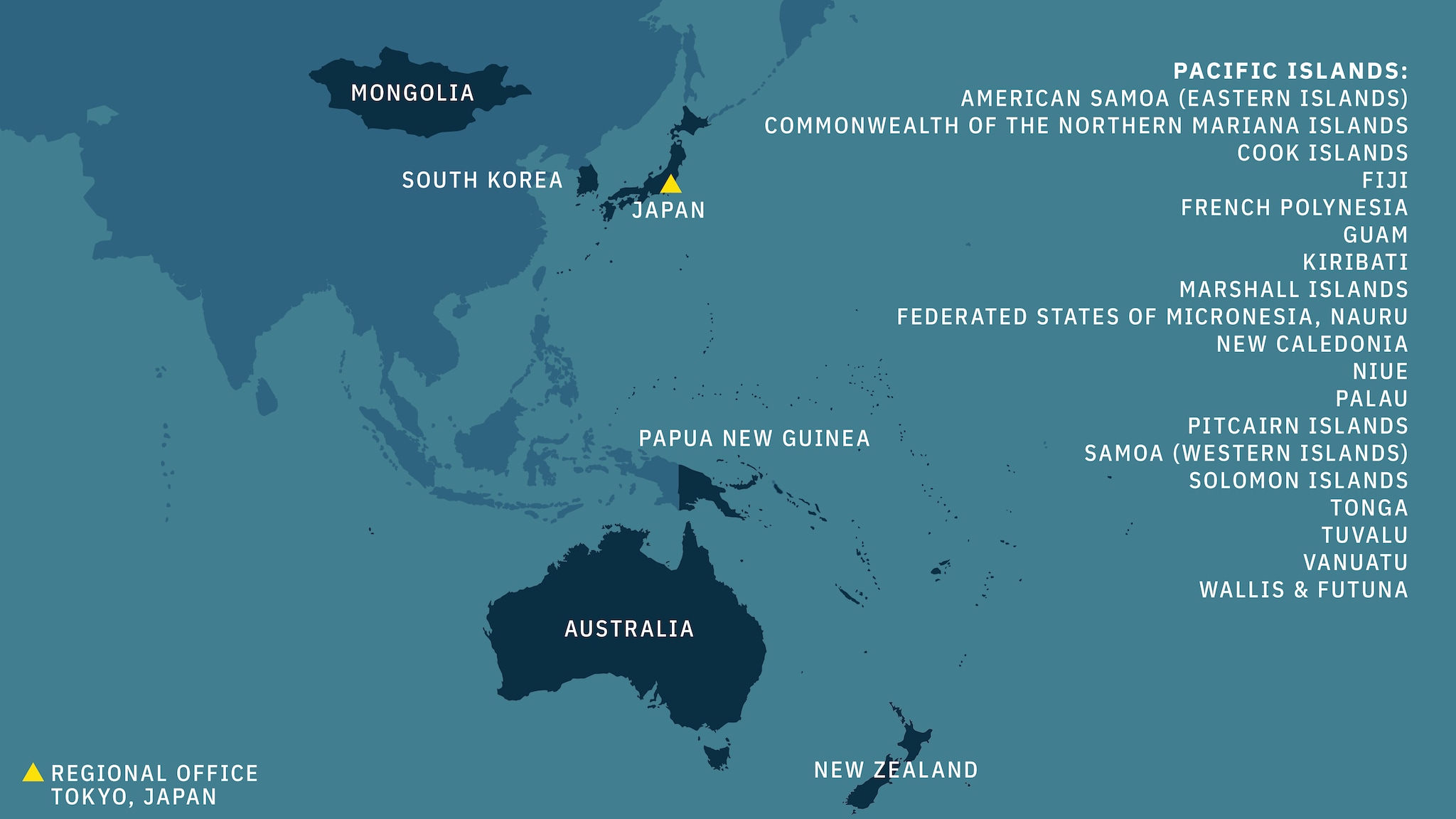At a glance
Launched in 2024, U.S. CDC’s East Asia and Pacific (EAP) Regional Office, located in Tokyo, Japan, is positioned to collaborate with 26 countries and territories in the region to strengthen core global health security capacities. Strategic global partnerships strengthen health systems in the region, reducing strain on U.S. resources and enhancing readiness against health threats. U.S. CDC advances regional health security to stop disease outbreaks at their source, making America safer.

Overview

The CDC East Asia and Pacific (EAP) Regional Office is strategically located in Tokyo, Japan and works across an expansive region to strengthen global health security disease detection and response. CDC enhances strategic collaboration bilaterally and multilaterally to address regional health security.
The EAP Regional Office fosters stronger collaboration and partnerships, improving the ability to detect public health threats across the region and stop them at their source. Additionally, it improves information exchange and shared best practices within the region. These efforts bolster regional and U.S. global health security.
Key areas of focus
Working together, CDC and partners will:
- Strengthen collaboration and partnerships with partner governments, international organizations, academia, and other public and private partners to improve regional and global health security.
- Improve detection and rapid response to emerging threats and diseases of public health importance.
- Improve knowledge and information exchange between U.S. CDC and the region on effective public health practices and public health threats.
Regional goals
U.S. CDC and partners are collaborating to:
- Enhance existing and develop new partnerships to advance health security priorities.
- Strengthen capability of the public health workforce.
- Strengthen the capacity of governments to effectively respond to public health emergencies.
- Enhance use of data to improve public health response and development of policy.
- Strengthen surveillance systems to better understand and predict disease trends.
- Promote science and innovation in public health.
- Strengthen public health laboratories.
- Improve ability of countries in the region to address vaccine preventable diseases.
- Work to eliminate diseases of public health importance.
CDC hosts the 2025 US-JAPAN Health Security Committee
The U.S. Centers for Disease Control and Prevention hosted the third U.S.-Japan Health Security Committee meeting in Atlanta, Georgia in 2025. In addition to experts from CDC, this meeting brought together stakeholders from the U.S. Administration for Strategic Preparedness and Response, the Japan Cabinet Agency for Infectious Disease Crisis Management, the Japan Ministry of Health, Labour, and Welfare, and the Japan Institute for Health Security. Together, these public health leaders forged stronger partnerships aimed at strengthening global health security between the two nations. The agenda centered on critical topics such as disaster response, medical countermeasures, and epidemic intelligence.
Participants showcased significant accomplishments over the past year, sharing successful strategies and valuable lessons from recent outbreak responses, including H5N1 and monkeypox. The committee initiated the exchange of information and coordinated responses to health emergencies through weekly epidemic intelligence reports, marking an important advancement in collaborative efforts. Participants also discussed new strategies to improve responses to future health threats.
The U.S. and Japan reaffirmed their commitment to improving communication and data sharing to ensure swift action during health crises. Both nations established plans to conduct joint exercises to bolster preparedness and response for possible public health emergencies.
The committee looks forward to reconvening in Japan in 2026 to continue building on this vital work.
